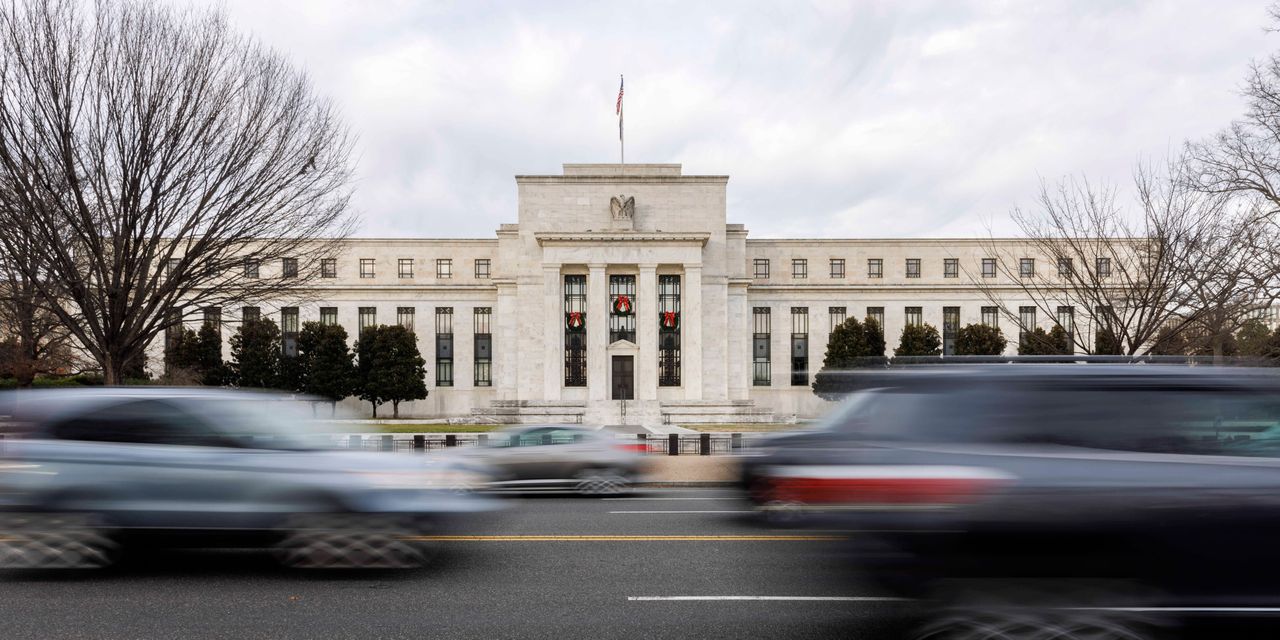
Markets are sending a hard message to decode: While the fate of the world’s big economies is ultimately intertwined, their monetary policies will become quite different in 2022.
Since last September, yields on two-year Treasury bills and gilts—a proxy for where investors see interest rates being set—have risen to 0.8% and 0.7% from 0.2% and 0.1%, respectively, whereas yields in the eurozone and Japan remain pegged at record lows. This reflects the big rift opening up between the major central banks of the English-speaking world and the rest: The Federal Reserve, the Bank of England and the Bank of Canada want to respond to a surge in inflation, whereas the European Central Bank and the Bank of Japan still attribute it to temporary supply-chain bottlenecks.
One of these two views must be wrong but, so far, the market appears untroubled. U.S., European and Asian stocks have all notched gains this week, following a bumper December. Some asset managers, though, are far less blasé in their 2022 equity-market outlooks.
One of their main concerns is that long-maturity and inflation-protected bonds, which are supposedly more relevant indicators of economies’ true health, have remained stuck at lower levels than pre-Covid.
SHARE YOUR THOUGHTS
Which monetary policy do you think will prove to be most effective? Join the conversation below.
The first oft-cited view is that the monetary divergence will soon be reflected there as well, because these economies are in different places: In the U.S., fiscal stimulus has been more generous, wages are going up at an annual rate of 4% and people are feeling empowered to quit their jobs. European and Japanese labor markets, on the other hand, remain more subdued. This warrants policy being set tighter in the U.S., many analysts argue. They say long-term yields were artificially held down by the Fed and are now set to snap back as bond purchases are tapered.
This week, Morgan Stanley Wealth Management warned clients that, for U.S. equities, “odds of a 10%-15% correction are increasing,” and advised biasing portfolios overseas. Equity valuations—particularly those of technology giants that the S&P 500 is now dangerously dependent on—are adversely affected by higher yields.
But it isn’t an entirely convincing story. Wage growth and resignations have also jumped in the U.K., which hasn’t received nearly as much fiscal support. After a shock like Covid-19, a hot job market isn’t a textbook bellwether of an economy’s closeness to its potential. It probably reflects more complex but temporary interactions affecting the speed at which workers and employers are matched. The U.S. and the U.K. are the two countries with the most flexible labor-market regulation for temporary workers, data by the Organization for Economic Cooperation and Development suggests.
The second common interpretation for lower long-term yields is that the Fed, the BOE and the BOC are overreacting and, faced with weaker growth, will eventually re-synchronize with the rest.
Indeed, a more likely scenario is that inflation and labor-market churn remain high in 2022, continuing to erode officials’ commitment to full employment and hampering new fiscal spending such as the Biden administration’s infrastructure bill, but that this eventually passes without a permanent growth-friendly shift in the balance of power between workers and firms. It should stop English-speaking central banks from raising rates as much as they now believe.
Even if these predictions are proven true, however, they need not imply the bad outcome for U.S. stocks some investors assume. With inflation-adjusted yields low, expanding profit margins and the dollar being strongly steered by short-term yield differentials, the Fed’s divorce from the ECB and the BOJ could—counterintuitively—create some extra love for America’s currency and its assets.
Write to Jon Sindreu at [email protected]
Copyright ©2022 Dow Jones & Company, Inc. All Rights Reserved. 87990cbe856818d5eddac44c7b1cdeb8








